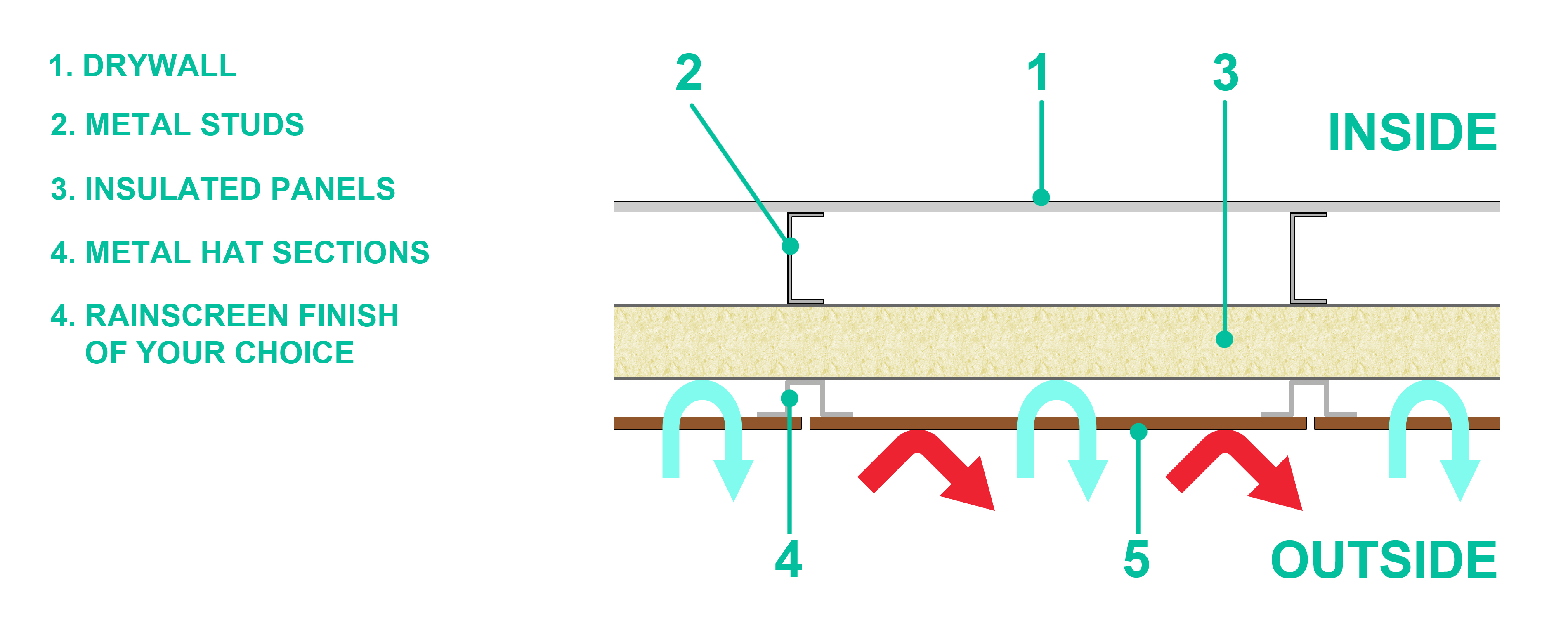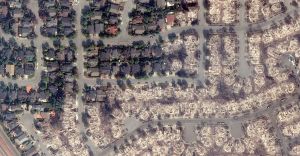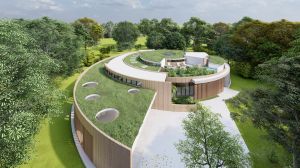Text...
WHAT IS A RAINSCREEN?
UNDERSTANDING THERMAL BRIDGING AND BASIC DIFFERENCES BETWEEN WOOD AND STEEL CONSTRUCTION PAIRED WITH INSULATED PANELS
A typical wood construction assembly is made of wood studs (commonly known as 2x4s) placed 16" off center with batting insulation material in between (picture below).
When exposed to weather conditions, the insulation along the entire assembly is NOT equal to the insulation value (R value) of the insulating material but much inferior; this is due to what is called "Thermal Bridging", which is caused by the fact that the studs are transferring either heat or cold through the wall into the interior space.
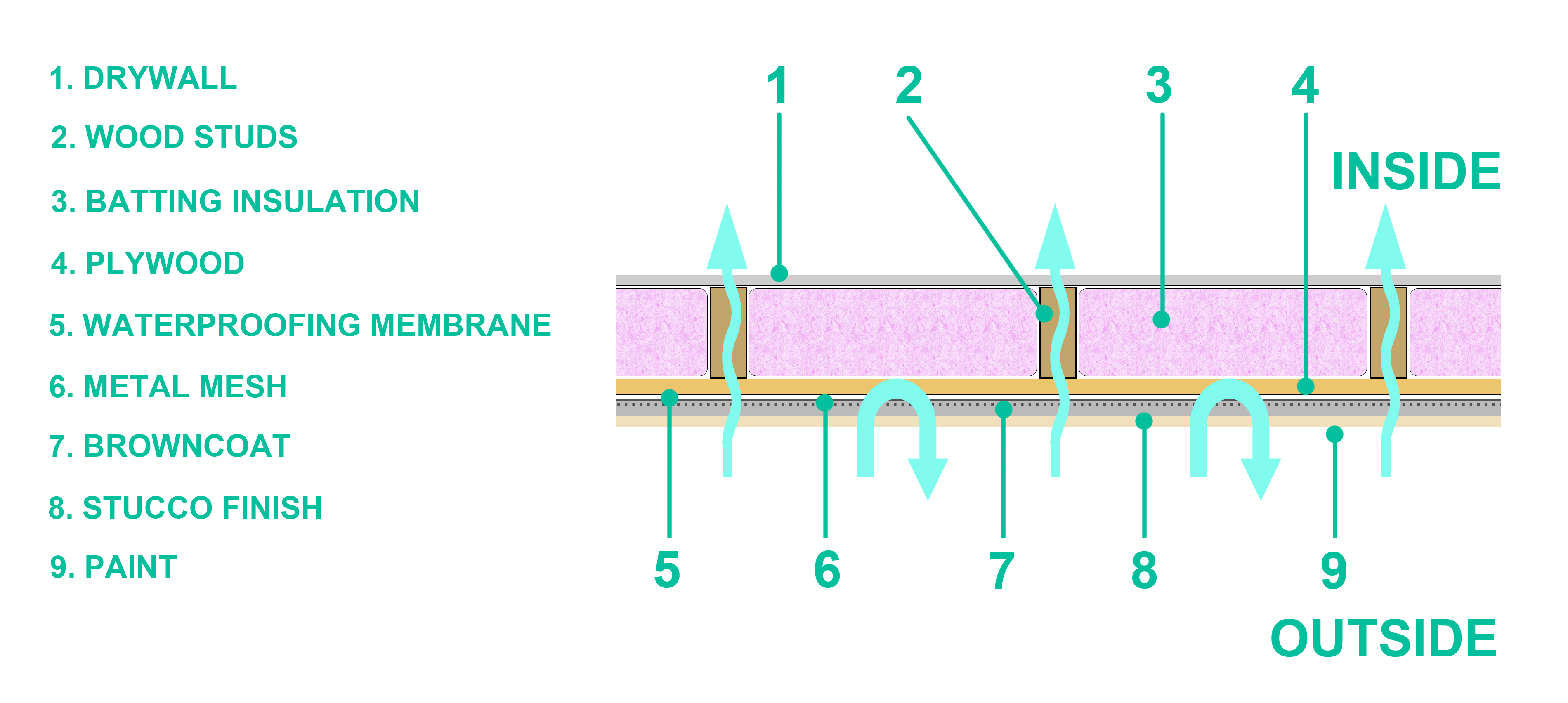
With an assembly system using an outer layer of insulated panels (picture below), thermal bridging does NOT occur because the insulating material (which has among the highest R value found in the construction industry), is placed outside the metal studs, making it impossible to both cool and heat to travel into the indoor space.
In addition, wood construction system employes many layers of materials to increase finish labor and if victim of water infiltration can rot and cause mold inside the walls, which represent an invisible heath hazard.
On the other end, light gauge steel construction does not rot and does not fear termites while the insulated panel system provides only few assembly layers facilitating speed of construction.
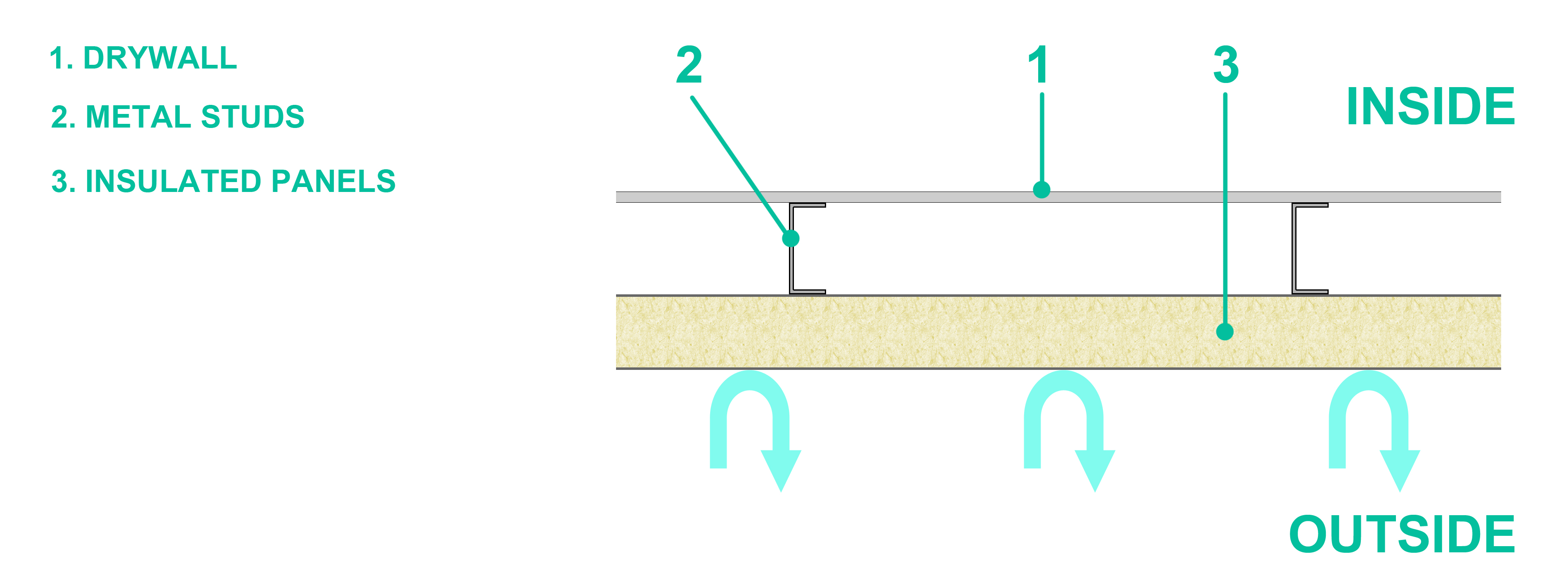
Finally, a rain screen system added to a facade protected by insulated panels, adds an additional layer of solar gain protection because the exterior material will absorb/reflect some solar radiation, to reduce the amount that has to pass through the insulated panel placed beneath.
This particular assembly provides a beneficial approach to both design and performance: insulated metal panels do not offer the best finish and looks unless you are searching for an industrial/warehouse look. To compensate for this lack of aesthetics, the rain screen system allows to provide an exterior finish virtually limitless as far as colors, materials and textures.
